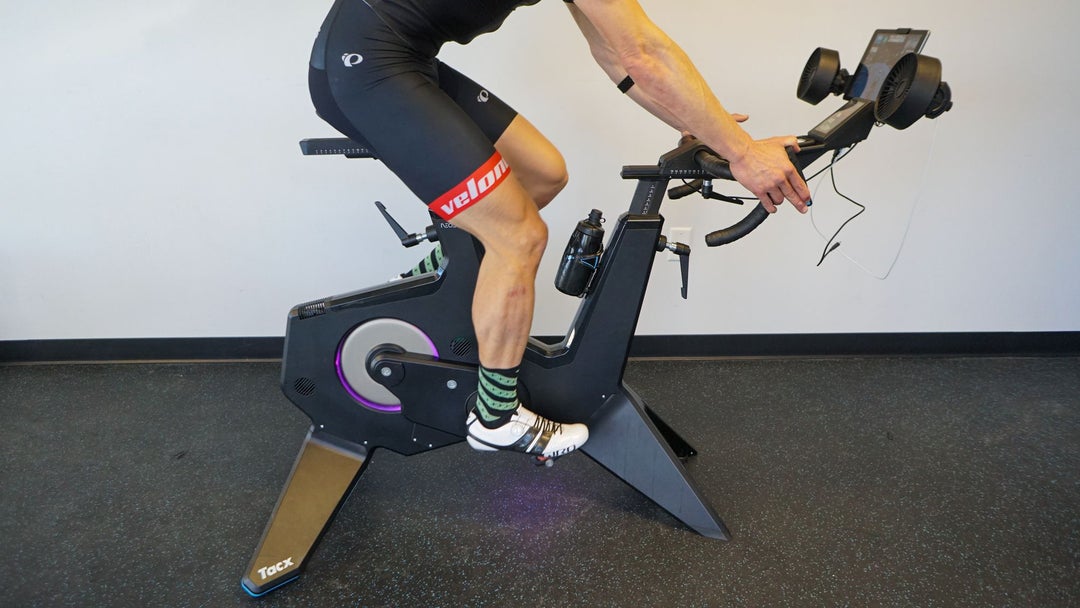Tacx Neo Bike: How Does This Indoor Bike Stack Up?
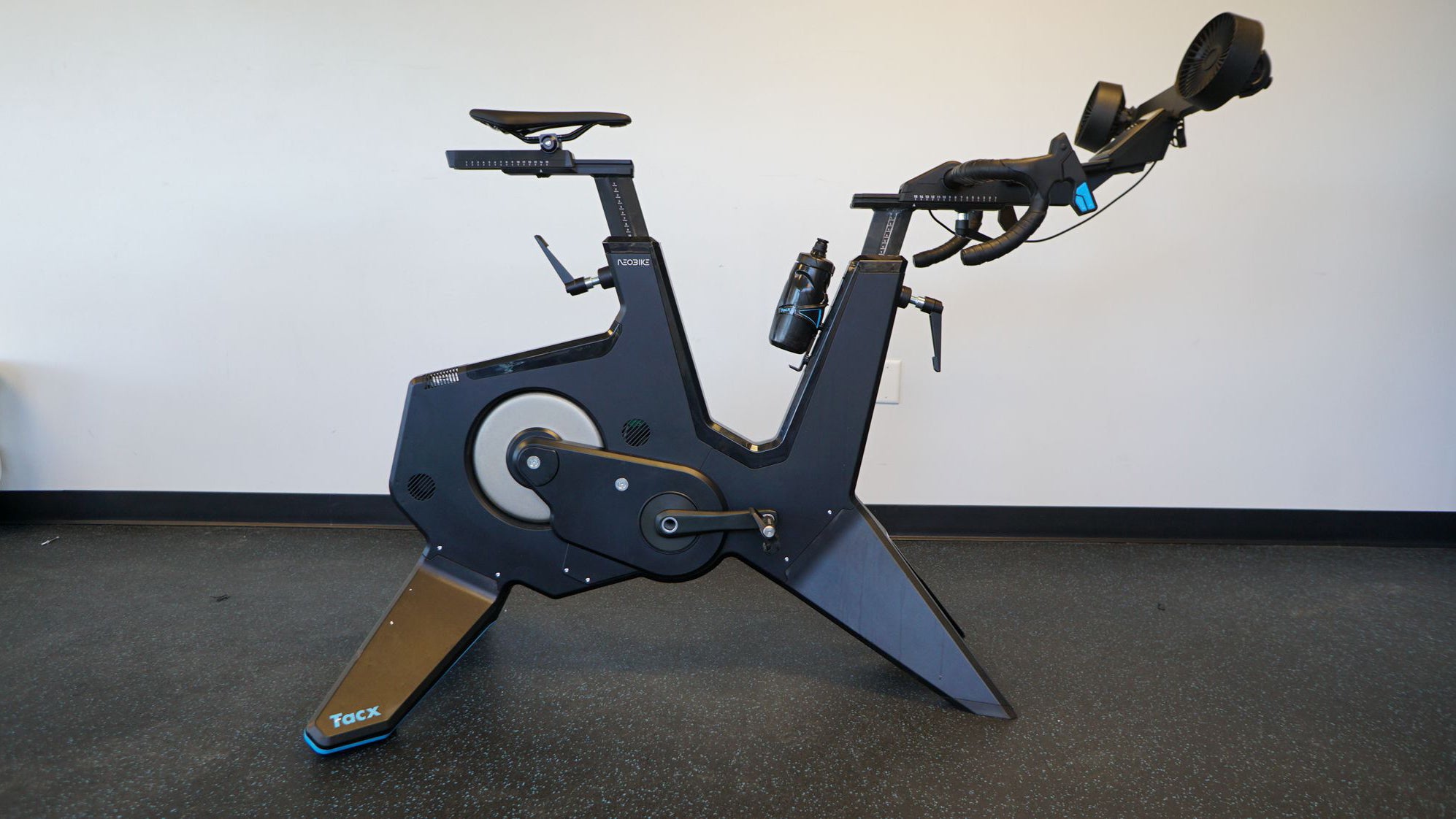
The Tacx Neo Bike interacts with training software like Zwift to control resistance and measure power. So is it worth the purchase? Ben Delaney shares his thoughts.
- Pros
- Excellent pedaling feel; stable base; doesn’t require power; helpful integrated computer; unique surface treatments
- Cons
- Frame has two flaws: it can rub the inside of your legs, and the handlebar reach is limited
Our Thoughts on the Tacx Neo Bike
The unique surface treatments add mental engagement, and the cockpit with USB ports, tablet holder, integrated computer and phone tray is largely well done. But the frame design is a bummer; definitely try before you buy so you can see if the inner-leg clearance is an issue for you.
- Weight 110 pounds
- MSRP: $3,200
Okay let’s get something clear: smart bikes designed for cyclists are not the same as indoor bikes, like those from Peloton or NordicTrack. For starters, the former are power-based tools designed to interact with third-party software, like Zwift, or TrainerRoad, while the latter are largely closed ecosystems that work with their own software. Tacx was the first company to create a smart bike—a combination of a smart trainer that measures power and adjusts resistance to third-party software, integrated with a dedicated indoor bike.
Cockpit Design
Bolted onto the front of the bike, the Neo Bike’s cockpit has five key features: a tray for your smartphone or other small items, a computer screen for ride data, a tablet holder, two USB charge ports, and two, little, pedal-activated fans.
Collectively, these features make for a unique cockpit compared to other smart bikes.
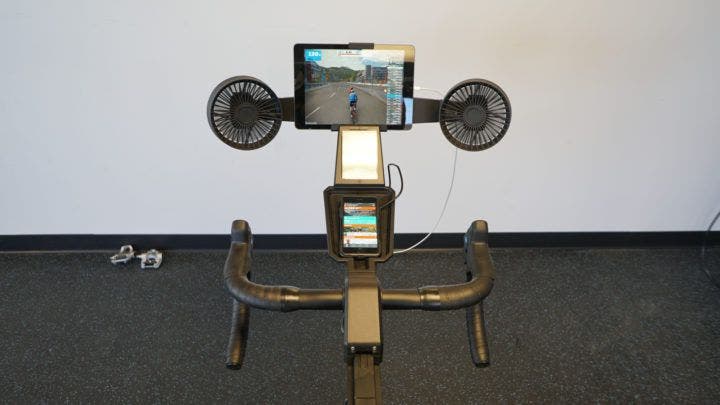
The computer has two modes. When the bike isn’t wirelessly connected to a device for use on Zwift or TrainerRoad, the computer displays power, cadence, heart rate, speed, gradient, and a visual gear indicator. When the bike connects to a device, the computer shifts to show just the gear indicator, and heart rate.
The tablet holder works pretty well, with a rubber strap, and a plastic clip holding your device in place.
Similarly, the USB ports are handy for charging your tablet and phone.
Impressively, you don’t even need to have the bike plugged into the wall for any of this to work. Turns out pedal power is a thing.
The fans, while novel, don’t really do much.
Levers and Shifting
The Neo Bike shift levers have two buttons on each, like a very rough approximation of a Shimano Di2 lever. The bike can be programmed, via the Tacx app, to replicate a variety of chainring and cassette configurations. The WattBike Atom, and StagesBike also have shifters, but they are mounted as buttons on the handlebar, not as road-like integrated shifters.
Shift feel at the fingers is okay, not as crisp as an outdoor bike, or the Wahoo Kickr Bike, but shift feel in the drivetrain is great. The electronic brake offers an immediate change in cadence.
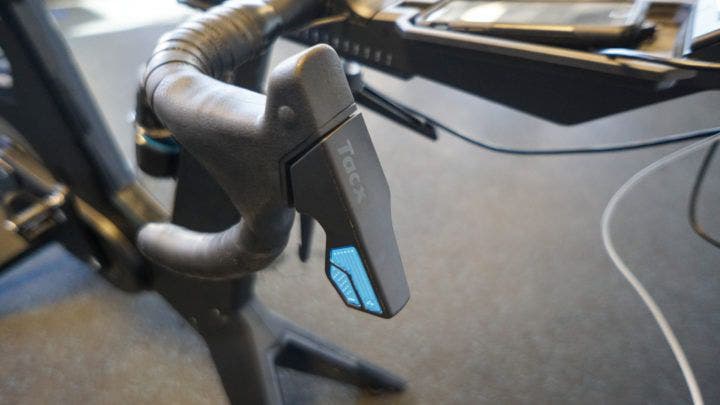
The brake levers are difficult to squeeze, but they do work. Why would you want to brake in Zwift? Great question. There isn’t much of a reason, but you can make the argument for pulling over to wait for someone, and, if you want to spike your power, you can brake while pedaling for a bit of a boost for your avatar.
Power and Crank Design
I measured the Neo Bike’s power against a set of Garmin Vector pedals that I have in turn tested against meters from Shimano, Stages and Quarq, and found the Neo Bike power reading be reliable. The Neo Bike’s power tracked along nicely with the Vectors, albeit about 3 to 4 percent higher than the pedals.
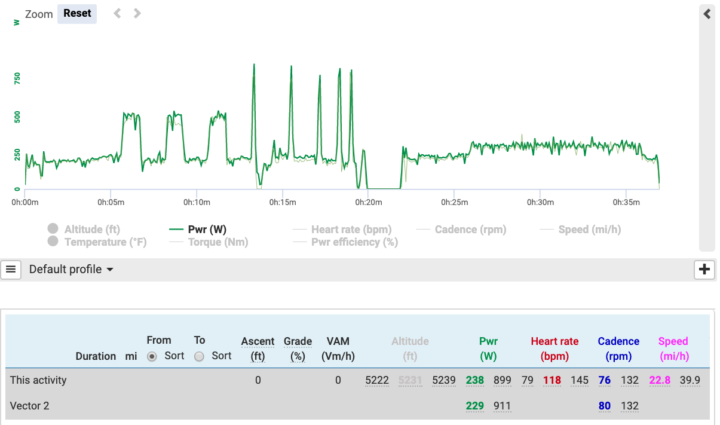
To accommodate three crank lengths, the Neo Bike has pedal inserts that are a bit of a pain to get set correctly. That said, once set up, the bike’s pedal feel is very good. It’s quiet (~60dB at 200w), easy to accelerate when you’re in a situation that shouldn’t require resistance (e.g., downhills, when plugged in), and, uniquely, dynamic in reaction to virtual surfaces such as cobblestones, bricks, dirt, and wooden bridges in Zwift. The electronic motor gives little micro stutters that replicate the feeling of riding over rough surfaces, which offers a fun bit of mental candy when riding in Zwift. As with the Tacx Neo 2T smart trainer, you can set the effect level for each type of surface in the Tacx app. I think it’s a cool feature which makes Zwift more fun.
When doing workouts in ERG mode, the Neo Bike allows for a bit of fluctuation in your output, which I appreciate, as it feels more like what you do when riding outside. When you fall behind on your cadence, however, the bike can bog down. Like many smart trainers, the Neo Bike takes the ‘watt = torque x rpm’ formula very literally, so if your rpm gets low, then the torque it demands goes through the roof. Often in this situation, you have to stop pedaling and wait for Zwift to disengage ERG mode, then you can start pedaling again. One annoyance is that when ERG mode reengages, the Neo Bike’s resistance jerks a bit as it kicks back in.
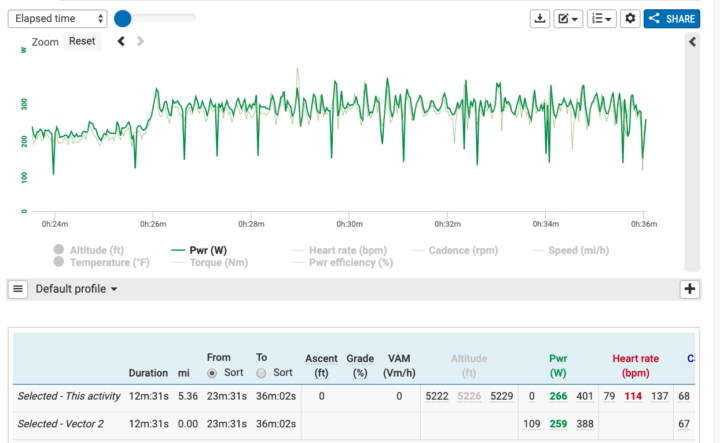
Notably, you cannot calibrate the Tacx Neo Bike. The power measurement is what it is.
Frame Design
The Neo Bike frame needs improvement. The frame rail just underneath the saddle is nearly 4cm wide, and rubs the thighs of many riders. Further down, the main frame swells to 6cm wide, and brushes the quads of many riders. I’m 180lb and have thick legs, so I had a few skinnier friends check the bike, and they had the same result.
For comparison: the Wahoo Kickr bike frame is just over 5cm wide, and sometimes my quads brushed against it while pedaling. The WattBike Atom is less than 4cm wide, and I never touched it. The best in class for this situation is the StagesBike, where there is effectively no frame between your legs as the frame design sits behind the rider.
The other downside on the frame is that the cockpit reach is limited. I had the thing slammed all the way forward, and still couldn’t quite replicate the position I have on a 56cm bike with a 120mm stem.
In terms of stability, the Neo Bike is excellent. Four, widespread points on the floor keep the heavy bike rock-solid under the hardest of efforts. Here, it soundly beats the Wahoo Kickr Bike, which can wobble when you’re sprinting.
When torquing on the bars, you can get the cockpit to wobble a bit, but nothing that I found disconcerting.
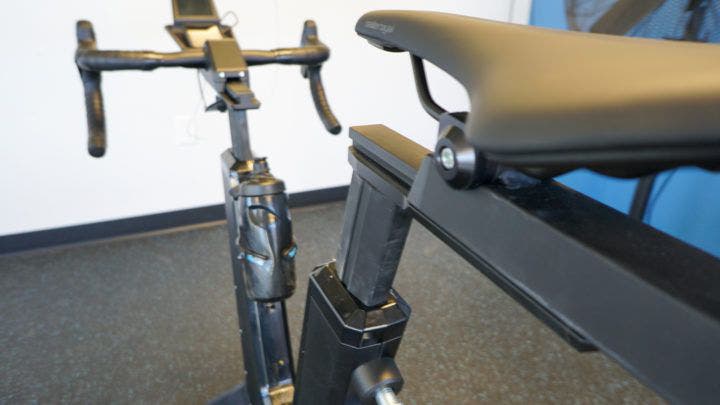
Tacx Neo Bike Verdict
With years of smart trainer design under its belt, Tacx created what was a very impressive first smart bike, combining the interactivity of smart trainers, with the convenience of an indoor bike, and adding cool features like surface treatments, and a mostly well-thought-out cockpit. The ride feel is excellent in terms of interactivity, power measurement and control, surface replication, and stability. The levers could benefit from more ergonomic shaping. The main drawbacks to the Neo Bike are the leg rub on the frame and the limited reach adjustment.
